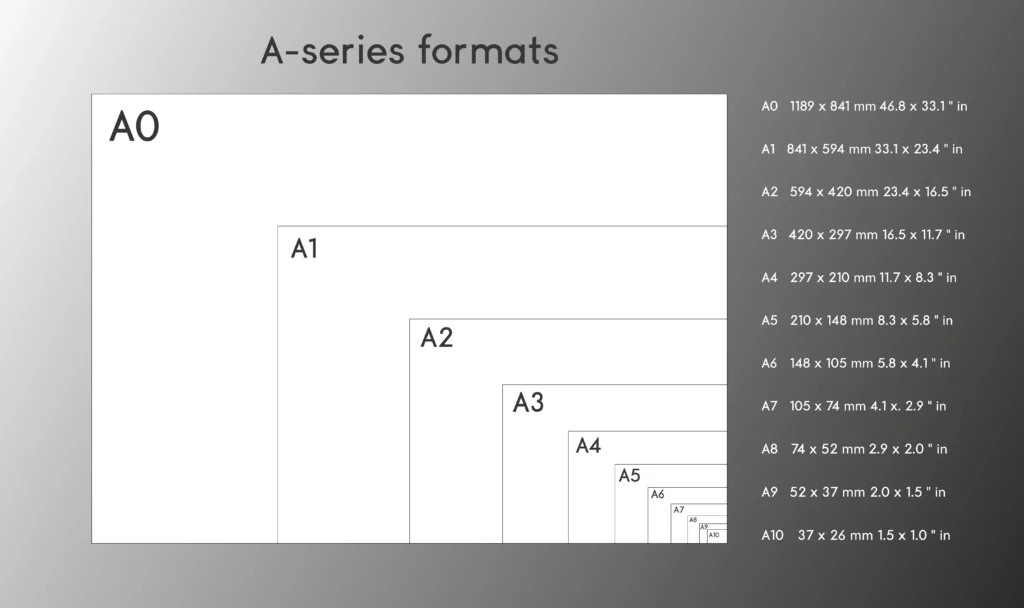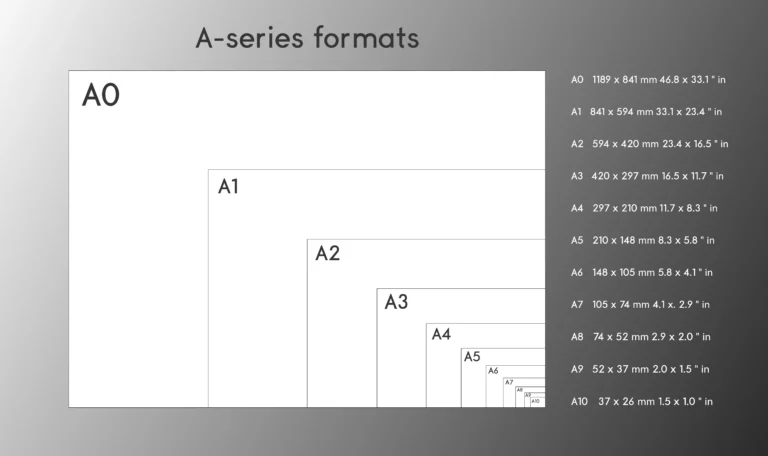I will talk about the importance of standard paper sizes in North America. We’ll focus on ansi paper sizes and their role in printing and document workflows. The American National Standards Institute (ANSI) defines these sizes, which are widely used in the United States and Canada.
Exploring ansi paper sizes will show how they affect different industries and uses. It’s key to understand the various types of ansi paper sizes. This includes ANSI A, ANSI B, ANSI C, ANSI D, and ANSI E.
Knowing these sizes is vital for managing documents and printing effectively. The American National Standards Institute paper sizes are the standard in North America. In this article, I’ll give an overview of ansi paper sizes and their uses. We’ll see how these standardized sizes benefit professionals in many areas.
Table of Contents
Understanding ANSI Paper Sizes and Their Origins
The American National Standards Institute (ANSI) started in 1918. It aimed to set voluntary standards in the U.S. They focused on standardizing paper sizes for easier communication and trade. This led to a system of paper dimensions used across the country.
Creating a paper size chart was key. ANSI wanted a consistent paper size for printing and sharing documents. This standard has helped many industries, like printing and engineering. Knowing about ANSI paper sizes is important for working with paper documents.
The History of American National Standards Institute
ANSI has been around for over a century, starting in 1918. They’ve worked hard to promote standards in the U.S. Standardizing paper sizes is just one example of their efforts to help communication and trade.
Why ANSI Created Standardized Paper Sizes
ANSI made standardized paper sizes for consistency and ease. They wanted to make printing and sharing documents simpler. This standard has helped many fields, from printing to engineering. Using a paper size chart is now a must for many tasks.
The Development of Modern Paper Standards
Creating modern paper standards took teamwork from many groups. Paper makers, printers, and government agencies worked together. They made a paper size chart that’s now common in the U.S. Knowing about these standards is key for working with paper documents.
The Complete ANSI Paper Sizes Chart
In North America, knowing the different ANSI paper sizes is key. The main sizes are Letter, Legal, and Ledger/Tabloid. Each has its own dimensions and uses, making them vital for many tasks.
The ANSI A size, or Letter size, is 216 x 279 mm (8.5 x 11 in). It’s perfect for daily printing. Legal size papers are 216 x 356 mm (8.5 x 14 in), great for legal documents. Ledger/Tabloid sizes, at 279 x 432 mm (11 x 17 in), are best for big prints.
Here are some important ANSI paper sizes and their dimensions:
- ANSI A (Letter): 216 x 279 mm (8.5 x 11 in)
- ANSI B (Ledger/Tabloid): 279 x 432 mm (11 x 17 in)
- Legal size paper dimensions: 216 x 356 mm (8.5 x 14 in)
These sizes are critical for printing, managing documents, and workflow. Knowing the ANSI sizes helps meet printing needs well and efficiently.
Common Applications of ANSI Standards in Professional Settings
ANSI paper sizes are key in many professional areas like printing, document management, and architecture. They help professionals work together smoothly. This is because they ensure documents and prints are made with top quality and precision.
In the U.S., ANSI leads in setting standards. They help industries follow a common path. Their ‘Standards Boost Business’ collection is for leaders in all fields. It shows how important it is to have standards.
Here are some ways ANSI standards are used in work: * Printing: ANSI sizes help get consistent prints. This makes it easier to create quality documents and materials. * Document management: They make organizing and storing documents easier. This cuts down on mistakes and boosts efficiency. * Architecture: ANSI sizes are used in building designs. They help create exact and precise plans of buildings and structures.
Using ANSI paper sizes means work is consistent and meets standards. It improves the quality of work. It also makes it easier to work together with others in the field.
| Industry | Application of ANSI Standards |
|---|---|
| Printing | Consistent printing results, high-quality documents |
| Document Management | Organization and storage of documents, reduced errors |
| Architecture | Precise and accurate representations of buildings and structures |
Comparing ANSI Paper Sizes to International Standards
When working with documents and prints from other countries, it’s key to know the difference between ANSI and ISO paper sizes. ANSI sizes are common in North America, while ISO sizes are used worldwide. Knowing the paper dimensions and size charts for each is essential for compatibility.
One major difference is the measurement units. ANSI uses inches, while ISO uses millimeters. For example, A4 in ISO is 210 mm x 297 mm. This is different from the North American Letter size (ANSI A: 215.9 mm x 279.4 mm). Knowing these differences is important for those who work with international documents and prints.

Here are some key ISO paper sizes and their dimensions:
- A0: 841 mm x 1189 mm
- A1: 594 mm x 841 mm
- A2: 420 mm x 594 mm
- A3: 297 mm x 420 mm
- A4: 210 mm x 297 mm
By knowing the paper dimensions and size charts for each standard, you can make sure your documents and prints meet international standards. This avoids any issues that might come from using different sizes.
Conclusion: Making the Most of ANSI Paper Standards
ANSI paper sizes are key in North American printing and document work. The American National Standards Institute created these sizes. They help professionals communicate and work together better.
Knowing the different ANSI paper sizes helps a lot. From the common ANSI Letter to the bigger ANSI Ledger/Tabloid, we can use them well. This makes sure our documents fit together smoothly, whether it’s reports, brochures, or drawings.
Even though most of the world uses ISO paper sizes, the U.S. and Canada stick with ANSI paper sizes. This shows how important it is to keep regional standards. By using these standard paper sizes, businesses in North America can make their work easier. This leads to better efficiency and productivity.
FAQ
Q: What are ANSI paper sizes?
A: ANSI paper sizes are a set of standard paper dimensions. They were created by the American National Standards Institute (ANSI). These sizes are common in North America, like the U.S. and Canada, for printing and documents.
Q: What are the different types of ANSI paper sizes?
A: There are several ANSI paper sizes: – ANSI A (Letter size) – ANSI B – ANSI C – ANSI D – ANSI E Each size has its own dimensions for different uses, like printing and engineering.
Q: What is the history and origin of ANSI paper sizes?
A: ANSI paper sizes were made by the American National Standards Institute. This group started in 1918 to set standards in the U.S. They made these sizes to help with communication and business across different fields.
Q: What are the common applications of ANSI paper sizes?
A: ANSI paper sizes are used a lot in work settings. This includes printing, managing documents, and in architecture. They help keep things consistent and of high quality.
Q: How do ANSI paper sizes compare to international standards like ISO?
A: ANSI paper sizes are different from ISO standards. While ANSI is mainly for North America, many use both ANSI and ISO sizes. It’s key to know how they work together when dealing with documents from different places.
